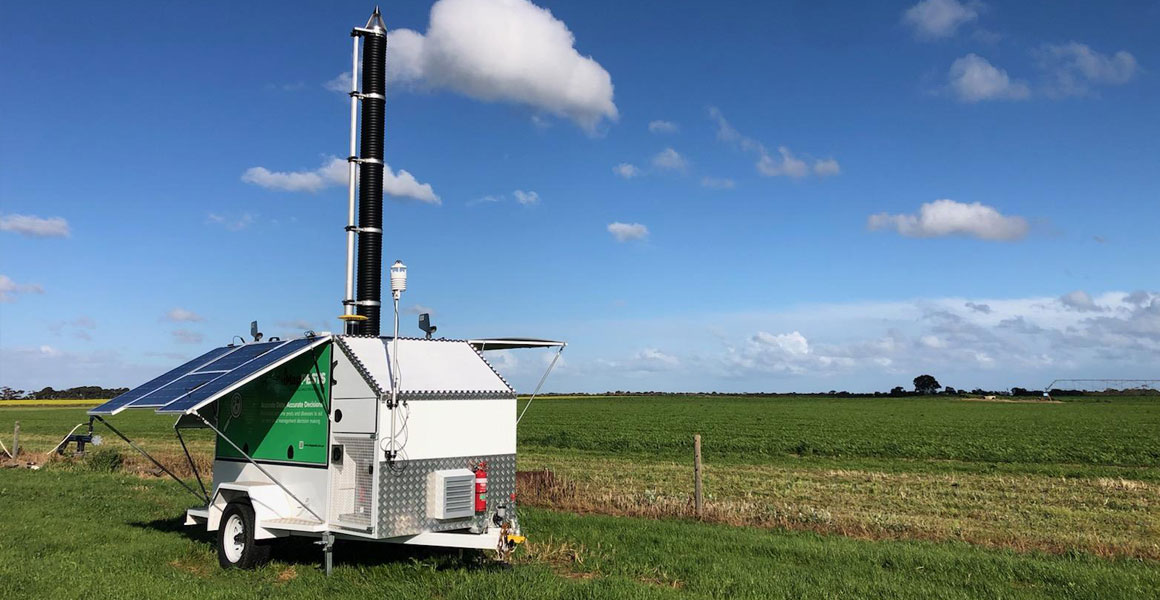High-tech surveillance unit in crop of Brussels sprouts in Langhorne Crk, SA
iMapPESTS’ second mobile surveillance unit, Sentinel 2, is currently monitoring in a crop of Brussels sprouts in Langhorne Creek, South Australia.
Sentinel 2 is targeting high priority, airborne pests and diseases, such green peach aphid, western flower thrips, onion thrips, Botrytis grey mould and Sclerotinia white rot.
Over the last four weeks of surveillance, the unit has detected low numbers of green peach aphids and onion thrips, with a small peak of onion thrips observed in early August.
Peaks in detection of Botrytis occurred in late July and the second week of August. Sclerotinia has been detected in fairly consistent numbers of the four week period of sampling at the site.
This data and the associated climatic information will made available to the public through the iMapPESTS website in the coming weeks.
The unit will be stationed in the area until early spring, before moving up into the Adelaide Hills, where it will be stationed for the remainder of spring.
Growers and agronomists who wish to be involved in the iMapPESTS program can register their interest either through the website or via iMapPESTS Engagement & Adoption coordinator, Shakira Johnson at shakira.johnson@ausveg.com.au.
For more information, please email Shakira or visit the iMapPESTS website.
To learn more about the iMapPESTS program, read this article featured in Vegetables Australia — Winter 2020!
The Sentinel, a state-of-the-art mobile surveillance unit, is a key output from the multimillion-dollar, cross industry iMapPESTS investment led by Hort Innovation, through funding from the Australian Government Department of Agriculture as part of its Rural R&D for Profit program, with support from 17 partner organisations.


